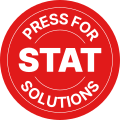Author: Kim Torrey
Practical Pain Management. 2023 March/April;23(2).
Medicare rolled out new codes effective January 1, including for bundled care, evaluation and management, telecare visits, and more. Learn how to report them properly for reimbursement.
When pain practices enter a new year, it is always a good idea to evaluate whether any new CPT codes have debuted that might make coding easier. However, practice managers and providers should also turn to the Centers for Medicare & Medicaid Services (CMS), because the agency also releases its own codes – and in 2023, that included new chronic pain management codes.
The 2023 CMS codes describe a composite of services that pain-treating physicians provide to a patient every month. Rather than billing a la carte for these services, specialists can now report the bundled code on a monthly basis as a simpler way to collect for the care provided.
Check the code descriptor to understand exactly what is included in the chronic pain management (CPM) bundle.
Specifically the code states:
G3002: Chronic pain management and treatment, monthly bundle including, diagnosis; assessment and monitoring; administration of a validated pain rating scale or tool; the development, implementation, revision, and/or maintenance of a person-centered care plan that includes strengths, goals, clinical needs, and desired outcomes; overall treatment management; facilitation and coordination of any necessary behavioral health treatment; medication management; pain and health literacy counseling; any necessary chronic pain related crisis care; and ongoing communication and care coordination between relevant practitioners furnishing e.g. physical therapy and occupational therapy, complementary and integrative approaches, and community-based care, as appropriate. Required initial face-to-face visit at least 30 minutes provided by a physician or other qualified health professional; first 30 minutes personally provided by physician or other qualified health care professional, per calendar month. (When using G3002, 30 minutes must be met or exceeded.)
Providers who spend more than 30 minutes with the patient can report the new add-on code, as follows:
G3003: Each additional 15 minutes of chronic pain management and treatment by a physician or other qualified health care professional, per calendar month (List separately in addition to code for G3002). (When using G3003, 15 minutes must be met or exceeded.)
Because G3003 is considered an add-on code, providers can only report it if they spend more than the allotted 30 minutes on CPM.
Example
An established patient presents for a monthly pain appointment that lasts 46 minutes. As long as the documentation supports the elements listed in the code descriptor, the provider should report one unit of G3002 and one unit of G3003.
Physicians have long faced challenges when justifying “chronic” conditions to Medicare payers, because the agency does not always define how it classifies the use of that phrase. However, in this case, CMS has now defined chronic pain as “persistent or recurrent pain lasting longer than 3 months” (a time period that chronic pain specialists have long utilized). This definition might prompt some providers to think the CPM codes are restricted to established patients, but that is not the case.
Specifically, the Fee Schedule states:
The beneficiary, at the first visit, need not have an established history or diagnosis of chronic pain, or be diagnosed with a condition that causes or involves chronic pain; rather, it is the clinician’s responsibility to establish, confirm, or reject a chronic pain and/or pain-related diagnosis when the beneficiary first presents for care and the clinician is using HCPCS code G3002.
A new Medicare patient presents complaining of pain lasting 6 months, but she has never addressed it with a clinician before. As long as the provider documents the 6-month duration of the patient’s pain and meets the requirements in the code descriptor, G3002 is an acceptable code to report.
Providers can now report evaluation and management (E/M) visits (99202-99215 in the office setting) along with the CPM codes as long as the documentation demonstrates that a distinct E/M visit occurred, separate from the time documented for the CPM service. In other words, anyone reviewing the medical record should be able to lift the E/M documentation from the CPM note and both should independently stand on their own in terms of time spent and elements covered.
Example
The provider’s documentation states, “Today I saw Mrs. Smith for follow-up evaluation of her lower leg pain. I examined her leg and foot and found no new lesions or bruises. I ordered labs and advised her to follow up with me in 6 weeks. I spent 10 minutes with Mrs. Smith on the visit.” This scenario warrants reporting of 99212. If the provider sufficiently documents chronic pain management services as well, both G3002 and 99212 can be utilized.
CMS has included CPM on its list of telehealth services, with one important caveat: the initial visit must be in person. After that, the patient can present over telehealth for subsequent visits. Keep in mind that the telehealth rules are expected to change after the COVID-19 public health emergency (PHE) expires, so providers should keep an eye on the extensions that the government makes to stay on top of the PHE expiration date.

